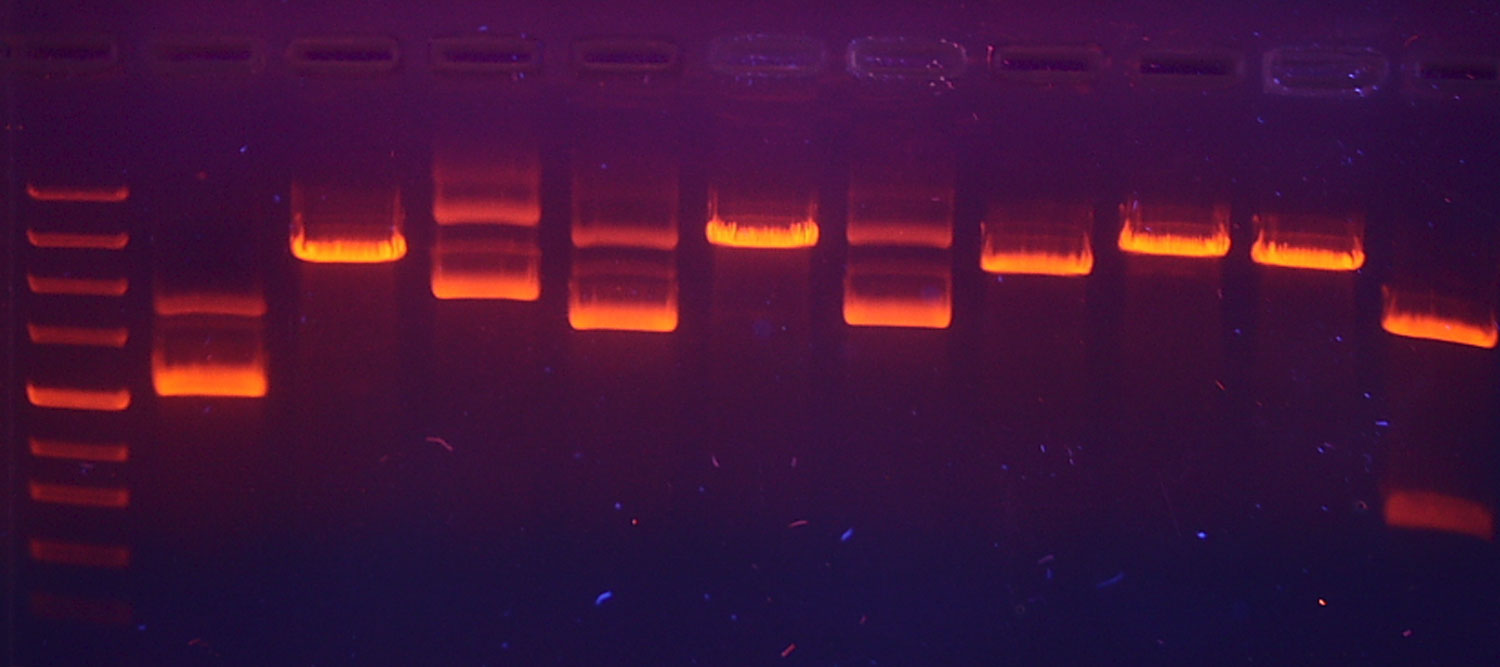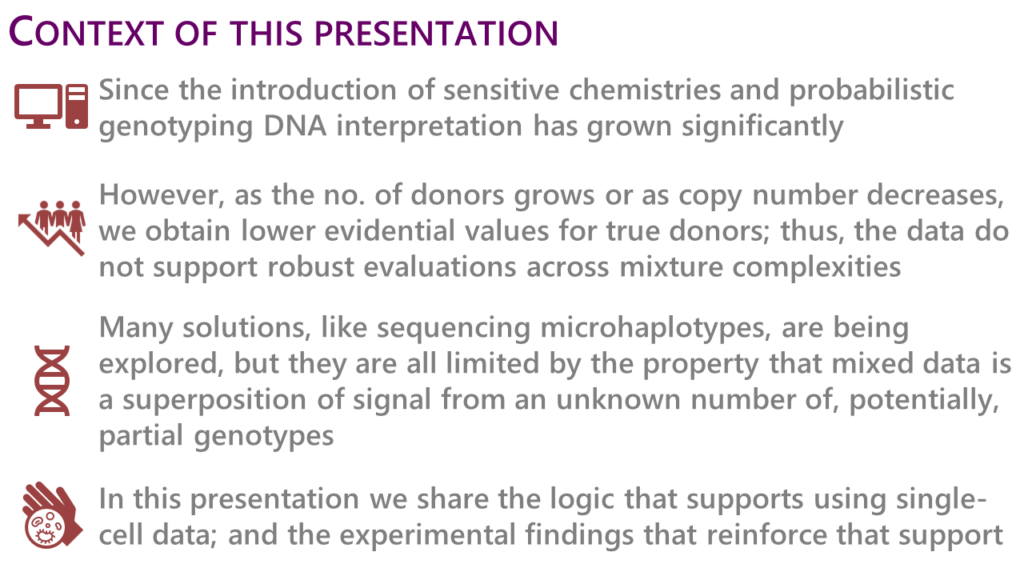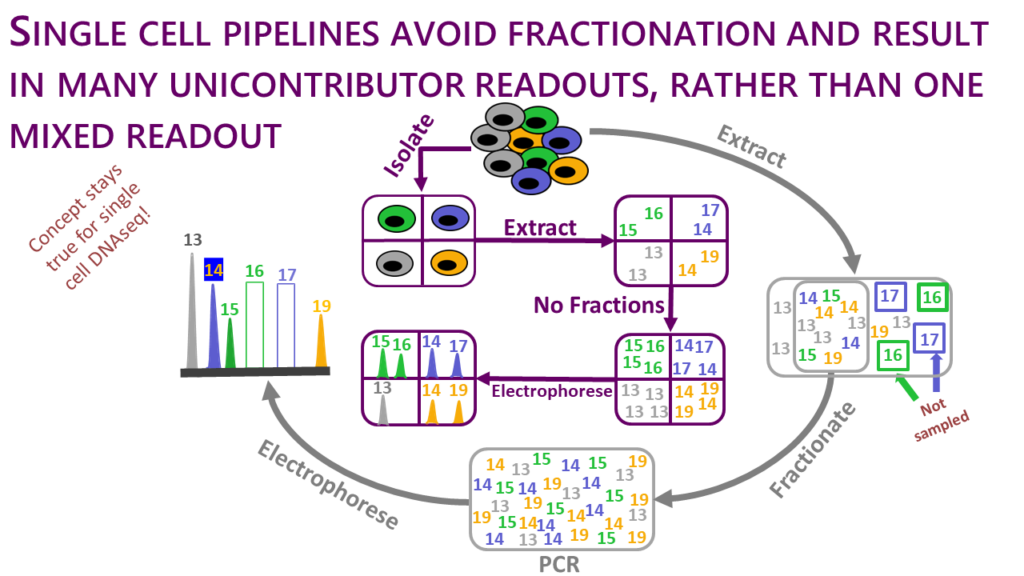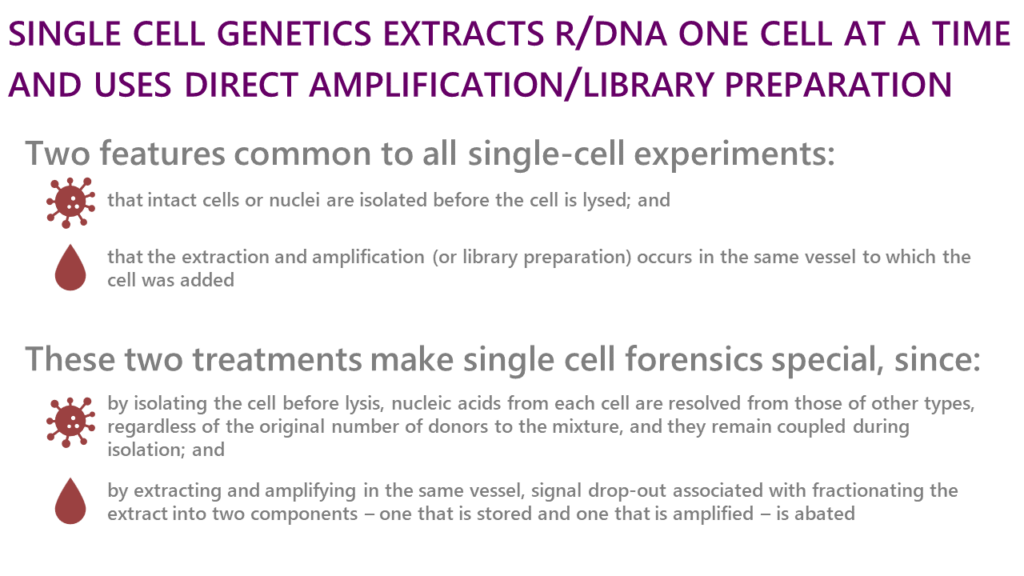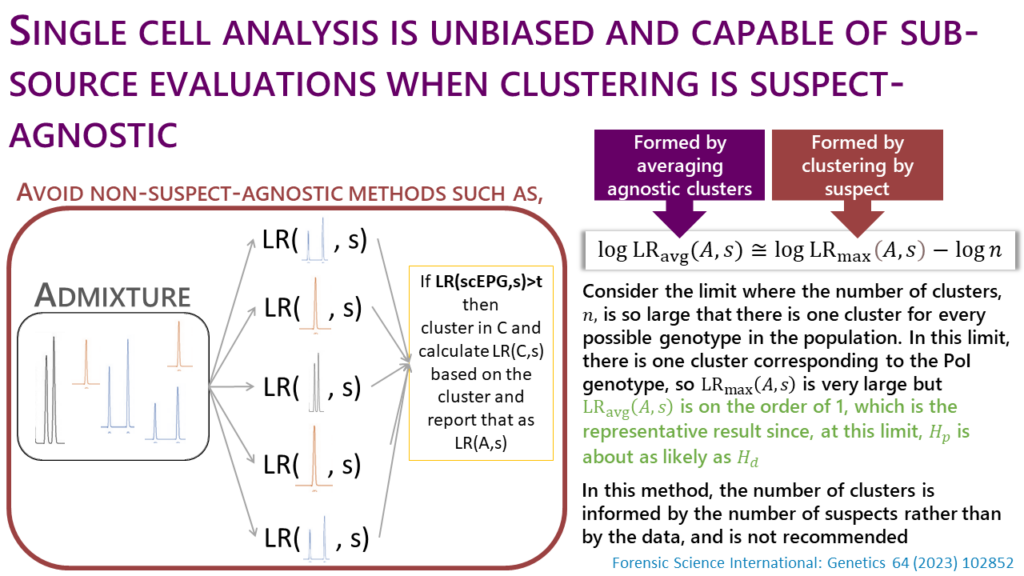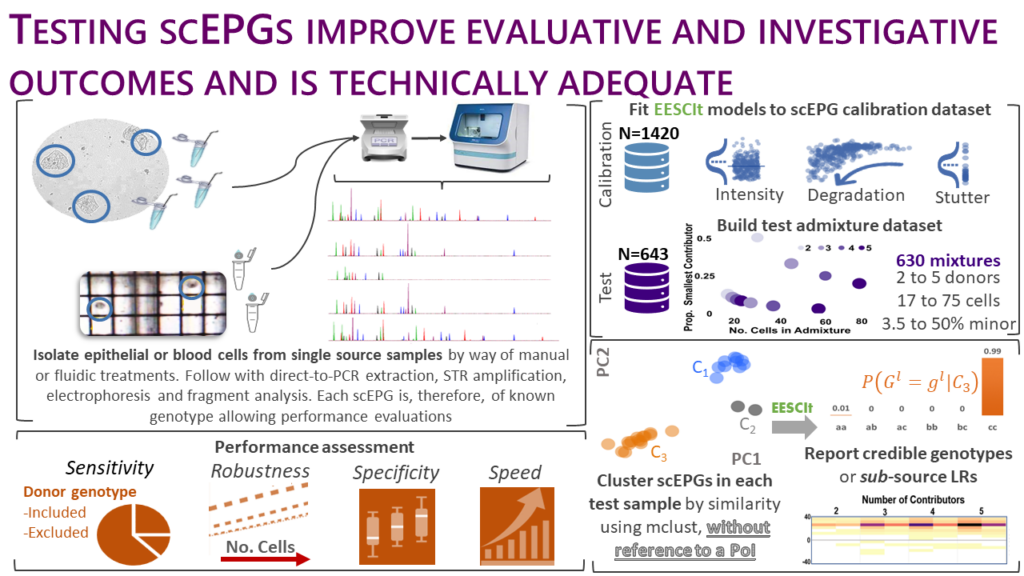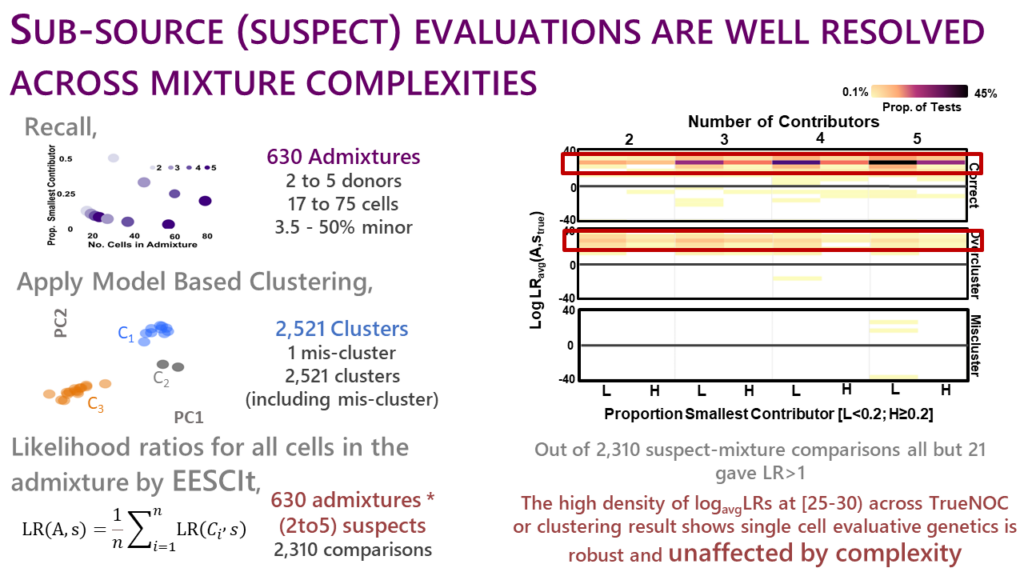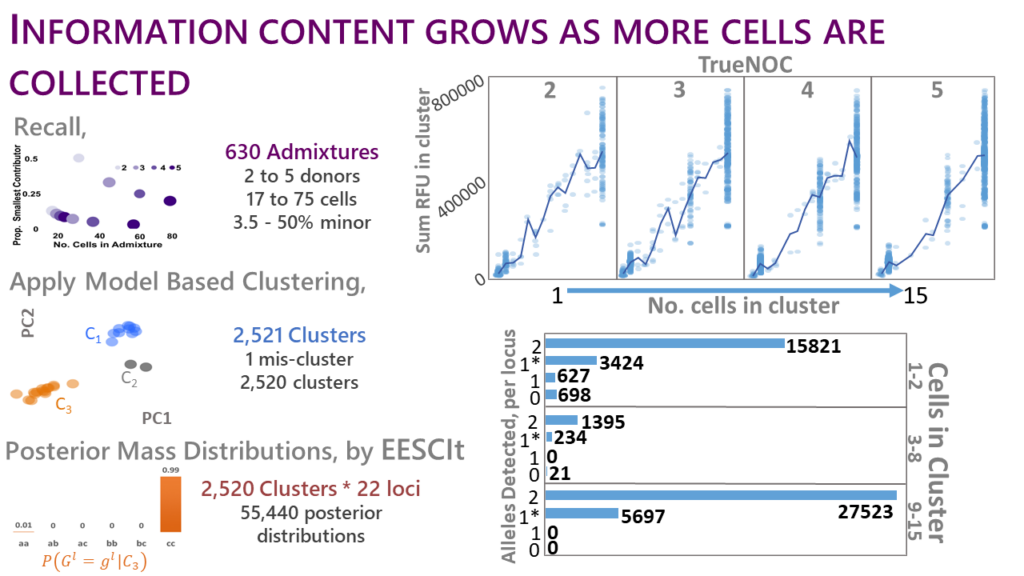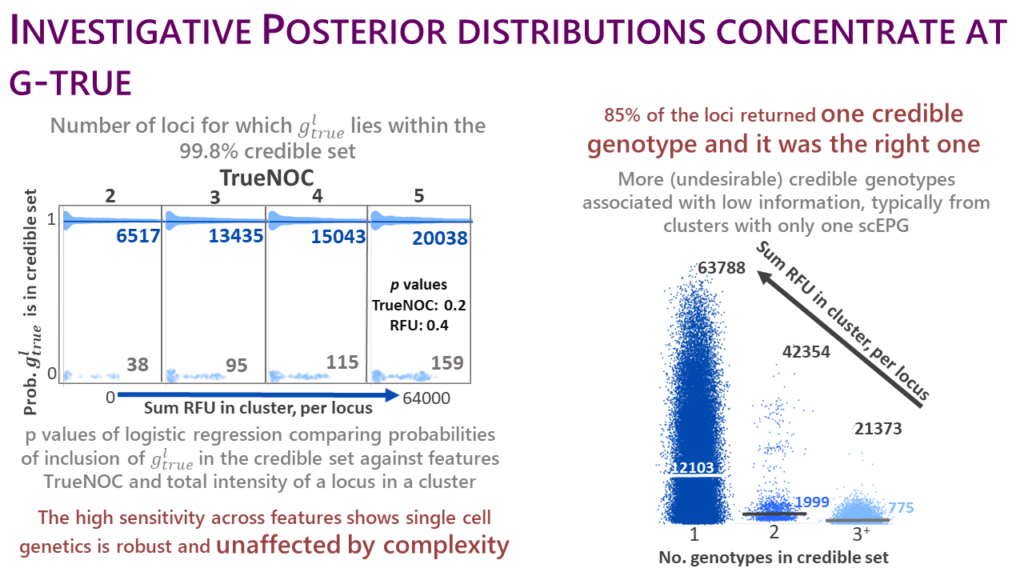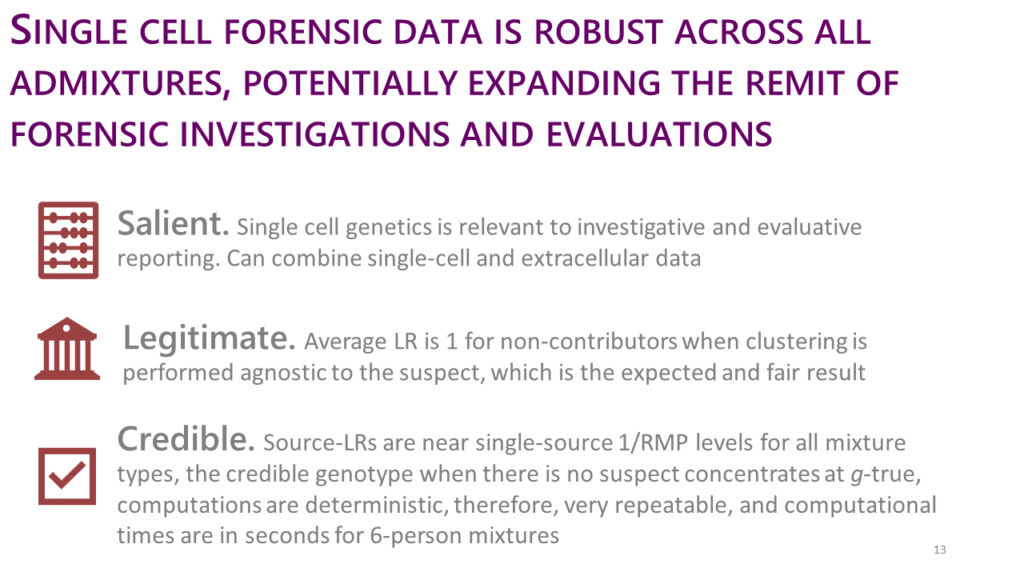Inference
While recent initiatives in single-cell forensics having made commendable strides in integrating single-cell and single-molecule technologies into forensic workflows, their focus remains largely technical—emphasizing cellular isolation, imaging, and genotyping. These innovations, though promising, risk falling short of courtroom admissibility standards without a rigorous evidentiary framework that accounts for deposition context, composite reasoning, and legal relevance.
The interpretive models in EESCIt (Evidentiary Evaluation of Single Cells) fills this gap by not only seeking to identify contributors from complex mixtures but formalizing the inferential logic that underpins such identifications, ensuring that scientific outputs are transparent, interpretable, and defensible in legal settings.
Data Generation
We also develop laboratory methods that support the transition of single-cell analysis into forensic operations.
Single white blood cells isolated and routed by way of di-electrophoresis We couple laboratory and interpretative approaches such that the core tenets of credibility, saliency and legitimacy are met. The goal is to produce a forensically relevant end-to-end single cell solution – from extraction to report – founded on sound chemical, biological and probabilistic principles.